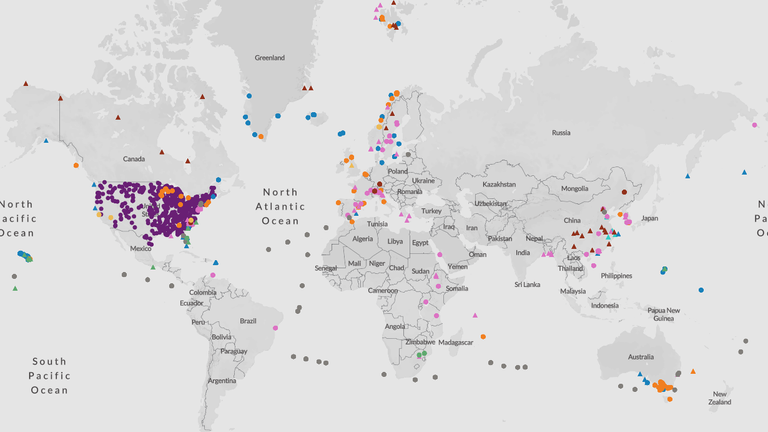Wildlife across the world – including the UK – is being exposed to pollutants known as “forever chemicals”, a study has found.
Researchers say per-and polyfluoroalkyl substances (PFAS) have been documented as contaminating or potentially harming 330 species across the globe including polar bears, tigers, monkeys, pandas, dolphins, birds and fish.
The man-made substances are nicknamed “forever chemicals” because they do not break down over time so can remain permanently in the air, soil, water and in the body.
They have been widely used since the 1940s in many everyday products such as non-stick pans, food packaging, carpets, furniture, and firefighting foam.
But there is worldwide concern about the impact arising from the use of PFAS on human health and the environment, with the substances linked to cancers and liver, kidney, and thyroid diseases.
People can come into contact with PFAS compounds by drinking contaminated water or eating food grown or caught near where the chemicals are produced.
Now US-based campaign group the Environmental Working Group (EWG) has conducted a major mapping project to highlight the scale of their spread in the environment using research from more than 100 recent peer-reviewed studies of PFAS contamination in animals.
It found more than 120 unique PFAS compounds in animals, including some endangered or threatened species.
In the UK, the project highlighted PFAS contamination in European otters, a protected species, in waterways in Lancashire – and in northern gannets off the east and west coasts of Scotland.
PFAS have been found at around 17,000 sites across the UK and Europe, with the highest levels in Britain found in a discharge from a chemicals plant on the River Wyre, near Blackpool, according to a separate report in The Guardian.
“From country to country, and across continents, PFAS pollution is everywhere,” the EWG said.
“No matter the location, no matter the species, nearly every time that testing is done we find contamination from these toxic chemicals.
“And the EWG map reflects just what we know now – given the extent of PFAS pollution, wildlife in many other locations around the world are likely contaminated.”
Click to subscribe to ClimateCast with Tom Heap wherever you get your podcasts
The non-profit group has called for urgent national and international regulatory action to protect wildlife from PFAS contamination.
In August 2021, the UK’s Environment Agency released data from its monitoring study of PFAS contamination in English rivers, estuaries and groundwater to evaluate PFAS use, sources and environmental pathways.
Read more:
Disposable vapes face ban as Scotland launches urgent review
COP 15: Delegates agree to protect 30 per cent of the world by 2030
The study found that 10 types of PFAS were being widely detected in the English aquatic environment.
“It is likely that PFAS is widely present in English surface waters and groundwater,” the study concluded.
Sky News has contacted the Department for Environment, Food and Rural Affairs (Defra) for comment.


















